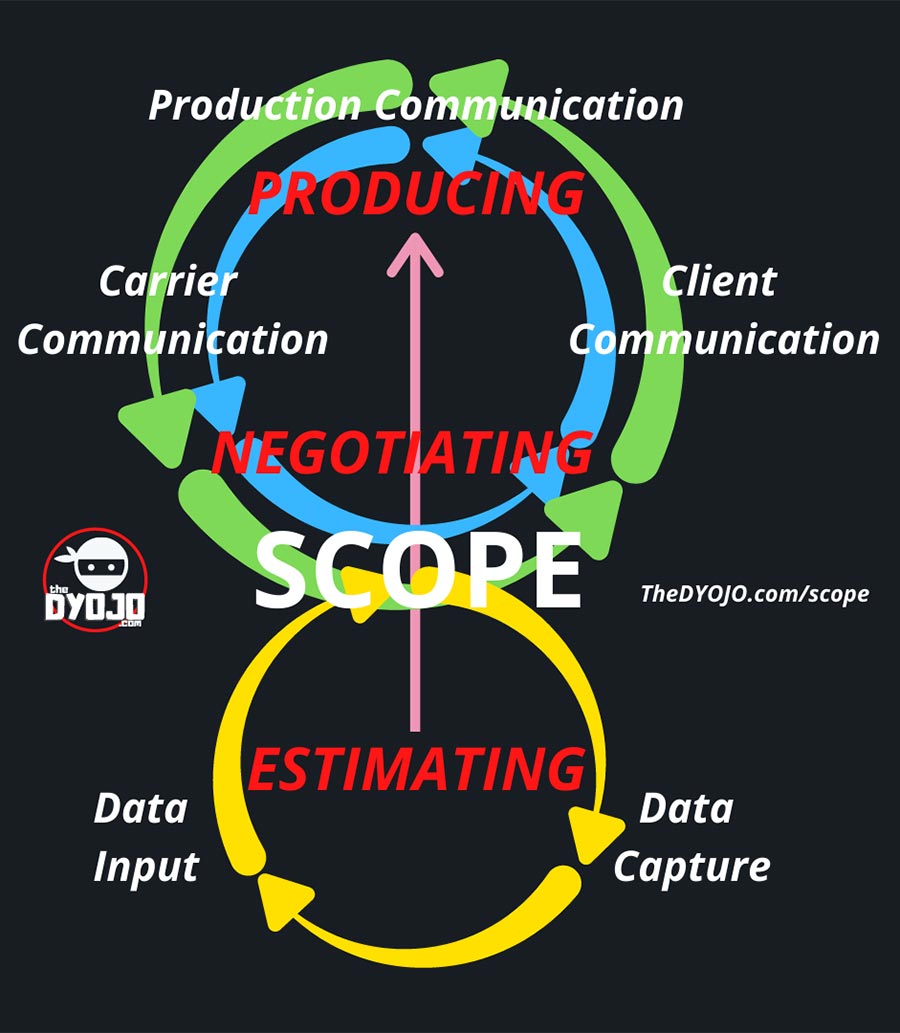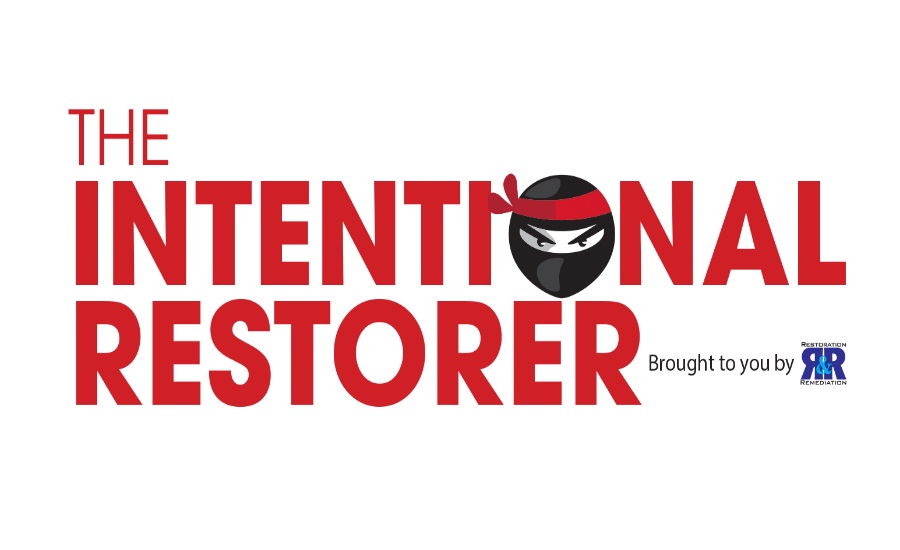Property restoration technicians, project managers and estimators work in a variety of property damage scenarios including water damage, fire damage, mold removal and insurance claim reconstruction. The most common tool for constructing estimates and/or agreed-upon scopes of work in the property insurance claims realm is an estimating software called Xactimate. As I have shared on multiple platforms, including my book, Be Intentional: Estimating, every insurance claims estimate, especially those composed in Xactimate, need two key things:
- Photos. Every loss needs lots and lots of photos. Photos of the source of the damage, the extent of damages, room by room, all four corners of each room, continuous surfaces and materials, contents, building materials removed, etc. You can never have too many photos, especially in the digital age, but you will need to train your team how to take their photos if you want to be able to use them to tell the story of the loss.
- A sketch or diagram. A dimensional drawing of the structure, a.k.a a sketch, is needed so that all parties – the homeowner, the insurance carrier, and the contractor (the Restoration Triangle) – can work from the same "blueprint" to assess damages, develop an agreed-upon scope of work, and assign values to the work that needs to be done. Training your team to sketch also touches on what technologies best fit your team to expedite the thorough capture and sharing of jobsite documentation.

Many restoration contractors, business owners and managers struggle to train their teams to clearly and consistently document the story of the loss. The DYOJO Podcast is kicking off Season 3 with a new series titled, The Xactimate Sessions. Greg Power (File 001), a current restoration write and run estimator/project manager working in Tacoma, Wash., discussed how he learned Xactimate from scratch. Greg shares how he developed his Xactimate sketching skills by using a laser tape measure and graph paper, something he still practices to this day. If you are responsible for training as a new manager or you are a restoration professional looking to grow your opportunities, this series will be packed with value for you. At the end of this first episode in the series, The DYOJO shares a video that demonstrates some tips for teaching your team members how to sketch a room, including clips of me teaching my young children how to diagram.
4 Tips for New Estimators Learning To Sketch for Xactimate
- At a minimum, you should have a laser tape measure and 1/4"-by-1/4" graph paper. We discuss technological upgrades in the video, but this should be the foundation of your property damage assessment and estimating kit.
- Always start in a corner, preferably one with two exterior walls. If you start your sketch in the center of a structure, it will be difficult to get your scale to line up and your sketch to lay out on one piece of paper.
- Use a consistent scale for your diagram, i.e. 1/4" = 2', where every box equals 2'-by-2' as you sketch to scale. If you are using graph paper or a program like GoodNotes, it can be helpful to mark certain scopes of work, such as flood cuts to drywall or floor removed, with designated colors that you utilize each time you walk a project.
- Always measure and mark your doors, cabinets, damaged areas, etc. It is helpful to utilize color for certain common scopes of work such as red for flood cut areas, orange for flooring removed, green for cabinets, etc.
- Purchase a copy of Be Intentional: Estimating, Developing the Right Mindset and Habits for Yourself and Your Team to Succeed with Estimating Property Insurance Claims.
- Subscribe, watch and/or listen to The Xactimate Sessions series from The DYOJO Podcast.
Until recently, like Greg Power (File 001), I consistently used a laser tape and physical graph paper. I updated to GoodNotes on an iPad with an Apple pencil, but have even more recently incorporated DocuSketch into my scoping process. Such 360-degree capture tools are game changers and I believe that if you aren’t learning to use these tools, you are quickly losing ground in the battle for efficiency and communication. In The DYOJO we focus on thorough data capture leading to accurate data input so that we can develop an agreed-upon scope of work to restore the property to resemble pre-loss conditions with materials of like kind and quality. This is the standard, which we had the honor to share with new independent adjusters attending the remote 2021 IA Path Adjuster Fair. These tools are increasing our ability as restorers to maximize our time on site by capturing more details in a shorter period of time. They also increase our ability to share those details with internal and external resources, which include remote estimators and carrier representatives. Your estimates, and profitability, will only be as good as the details you can capture and communicate first to the carrier in negotiating your agreed-upon scope and then to your production team as you execute the work.
A Brief Review of Sketching Resources and Tools
A great point that Brian Austin, director of instructional design at Verisk (parent company of Xactimate), shared on The Xactimate Sessions File 002, is that with the speed of innovation, you have to be intentional to stay on pace or you will be left in the dust. If you are like me, it may take a while before you get on board with an innovation like these 360 capture resources, but once you do, you will be so glad that you did something. Here are a few brief thoughts on some of these tools that can shorten your DANG learning curve with sketching for Xactimate:
- DocuSketch. I have had the most experience with this tool and have been directly involved in two local companies’ integration of the resource into their scoping process. I have found that a key advantage is the speed of use and method of data capture. I find that the ability to label photos (comments) in the room to be particularly helpful when importing those photos into Xactimate. The DYOJO has a discount code for $200 off of the initial hardware setup using “DS-DYOJO1”.
- Matterport. I have some experience using this tool and one great advantage from this resource is being able to measure surfaces within the scan. Many people who are much smarter and more talented than me use this resource regularly and there are several video demonstrations and training options.
- Magicplan. When I attended the Restoration Industry Association (RIA) 2021 conference, I had the opportunity to visit with this group. One advantage that I observed was that technicians would only need to be able to scan walls to develop an immediate sketch. It appears the training with this tool would be minimal to achieve a functional sketch.
- You tell me. What are you using that is helping your team be more efficient in the areas of thoroughly capturing data (documentation) and accurately inputting data (estimation)? How are you stepping up your scoping game?


